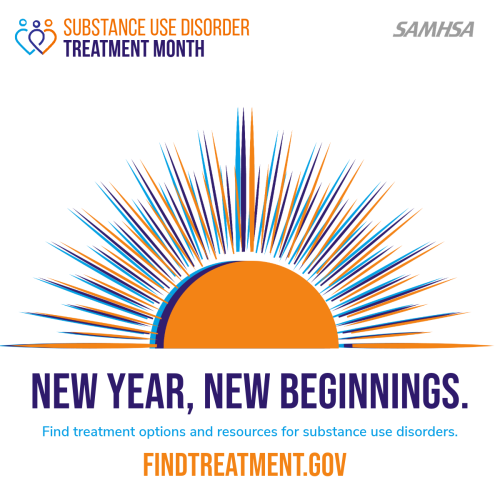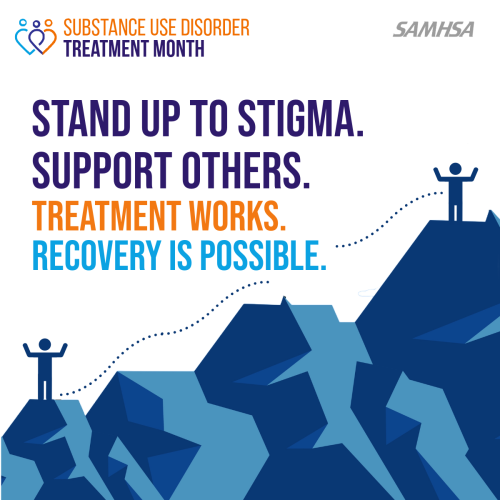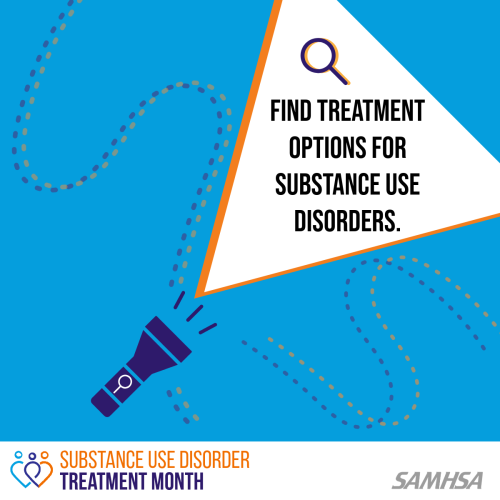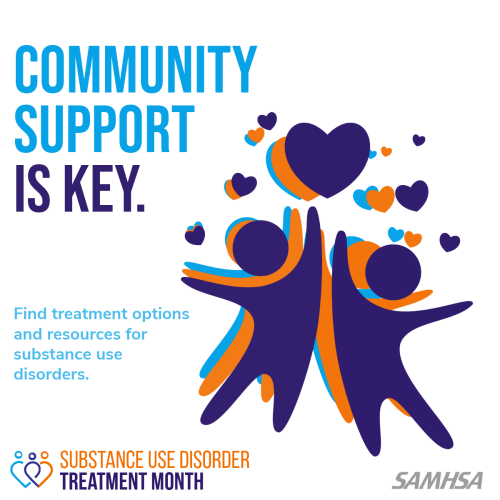January is Substance Use Disorder Treatment Month: A New Year for Change and Healing
January offers a fresh start for individuals and communities to realign with their core intentions. For those in the field of behavioral health, the new year brings an opportunity to renew our commitment to supporting individuals facing substance use disorders (SUDs). It is a time to reflect, educate, and take action to break down barriers, promote treatment options, and continue the vital work of supporting recovery.
This year, the Substance Abuse and Mental Health Services Administration (SAMHSA) has launched the first-ever National Substance Use Disorder Treatment Month. As healthcare professionals, we hold a unique position to drive change, reduce stigma, and connect individuals with essential resources. During this inaugural observance, behavioral health providers can prioritize efforts to eliminate stigma surrounding treatment, support individuals on their recovery journeys, and promote best practices such as screening, intervention, and treatment for substance use disorders.
Throughout the month, SAMHSA will highlight key themes each week: Starting Fresh, Reducing Stigma, Demystifying Treatment Options, and Supporting Treatment-Friendly Communities. Each of these themes is explored further in the blog below. Be sure to check out their Treatment Month toolkit and stay connected through SAMHSA’s social media platforms for tips, resources, and webinars designed to educate people about substance use disorders and effective treatment options.
Fresh Start
As we begin the New Year, providers have an opportunity to support individuals seeking a fresh start in their journey toward recovery from substance use disorders. Whether a patient is participating in Dry January to reset their relationship with alcohol or taking their first steps toward long-term recovery, every effort counts. Treatment and recovery are processes that require patience and support, and as providers, you play a critical role in guiding your patients toward health and healing. Remember, small steps lead to big changes. Access resources to better support your patients, including information on treatment options and medications for substance use disorders. Let this year be one of hope, healing, and new beginnings for you and those you serve.
Reducing Stigma
Stigma remains one of the greatest barriers to individuals seeking treatment for substance use disorders, yet as providers, you have the power to change that narrative. Substance use disorders do not discriminate, and breaking the stigma starts with fostering an environment of understanding and support. By spreading awareness that treatment works, and recovery is possible, you can help patients feel empowered to seek the care they need. Treatment not only improves health but also transforms lives by helping individuals regain control, strengthen relationships, and achieve their goals. Access SAMHSA’s library of open access publications to help educate yourself and your clients.
Demystifying Treatment Options
Recovery from substance use disorders is possible with the right tools and support, and as a provider, you play a vital role in guiding patients on their journey. FDA-approved medications, such as methadone, buprenorphine, and naltrexone, are proven to improve long-term recovery outcomes and can be life-saving in treating opioid and other substance use disorders. Combining these medications with counseling and recovery supports offers a comprehensive, evidence-based approach to treatment. Stay informed on the latest guidelines and practices, including changes under the MAT Act, to ensure the best care for your patients. Explore SAMHSA’s resources to learn more about medication options and share them with your patients. Together, we can provide compassionate, effective care and help individuals achieve lasting recovery.
Supporting Treatment-Friendly Communities
Each community member plays a vital role in supporting individuals affected by substance use disorders, with providers being an essential part of the solution. If you suspect a patient is struggling, encourage them to seek professional treatment, including FDA-approved medications, counseling, and support groups. Ensure you know and understand the resources available to those you serve, and continue to build your network of referrals. In addition, SAMHSA provides valuable tools and training to help you guide your patients, including resources for integrating medication-assisted treatment (MAT) into care. Additionally, you can access further training and technical assistance for mental health and substance use practitioners. By supporting patients through every step of their recovery journey, we can provide the care and resources they need to reclaim their lives and achieve lasting recovery, celebrating each forward movement, no matter how small.
As a behavioral health provider, your role in treating substance use disorders extends beyond therapy to include guiding clients through every stage of recovery, offering resources, and combating the stigma surrounding treatment. To effectively support clients, it’s important to normalize seeking help, encouraging them to view treatment as a pathway to regain control and enhance well-being. Educating clients about various treatment options—such as outpatient care, medication-assisted treatment (MAT), and therapy—ensures they understand their choices and can make informed decisions. Creating a non-judgmental, supportive environment is essential for fostering open discussions about substance use without fear of stigma. Additionally, leveraging SAMHSA resources like findtreatment.gov and samhsa.gov/families provides clients with valuable information and guidance on their recovery journey.
As we observe the inaugural Substance Use Disorder Treatment Month, we call on all behavioral health professionals to continue their essential work in supporting individuals facing substance use disorders. By removing stigma and offering resources, we can promote recovery and empower individuals to take control of their health. Recovery begins with the first step, and we are here to help guide individuals toward healthier, more balanced lives. Let’s make 2025 a year of healing, hope, and transformation for those we serve.
References
Substance Use Disorder Treatment Month. (2024). Substance Abuse and Mental Health Services Administration (SAMHSA). https://www.samhsa.gov/newsroom/observances/substance-use-disorder-treatment-month
Blog Post Tags:
Related Blog Posts
Related Learning Labs
Related Resources
.
- Buscar Tratamiento de Calidad para Trastornos de uso de Sustancia (Finding Quality Treatment for Substance Use Disorders Spanish Version)
- Finding Quality Treatment for Substance Use Disorders
- Focus On Prevention: Strategies and Programs to Prevent Substance Use
- Monthly Variation in Substance Use Initiation Among Full-Time College Students
- The National Survey on Drug Use and Health (NSDUH) Report: Monthly Variation in Substance Use Initiation Among Adolescents












